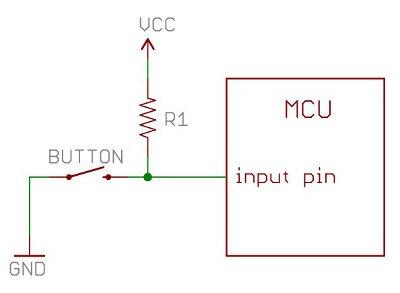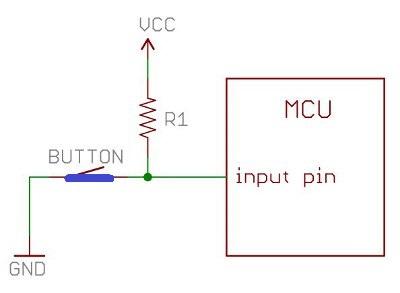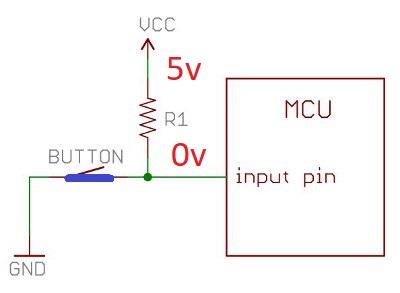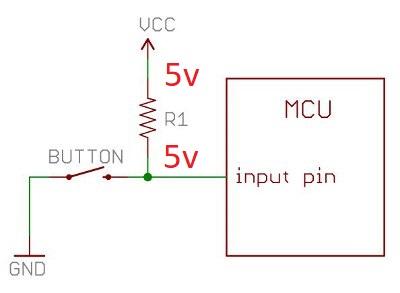What is a pull-up resistor?
Monday
Add Comment
During the day at the bench when looking for help or analyzing a scheme it is common to hear the term pull-up resistor . But after all what is a pull-up resistor and what is its real function in the circuit?

Look at the image below. In it we can identify 5 elements (let's say). We have a GND ( ground ), BUTTON ( button on off ), MCU ( let's say it's the IO ) a resistor and the VCC ( positive voltage ).

With the circuit active, we will have the following scenario: Assuming the switch is open, we will have current flowing through R1 and arriving at the MCU input pin . The voltage present is the same on both sides of R1 .
Now imagine that the button has been pressed, so the voltage present on the underside of R1 is brought to GND as we close the contacts of the button.

At this point we should have a short because we play a positive line on a GND line right? You're right, but it's not our case, because in this circuit there is a guy that makes all the difference is the famous PULL-UP RESISTOR . Let's understand what it does. But for that see the image below;

At this time it's normal for you to ask me, but Edson how can these 5v on one side and 0v on the other then
exist short? Well that's thanks to the resistor, as we know its role is
to limit the current in the circuit and that's exactly what it's doing
right now. When we close contact on the button and put the underside of R1 on GND
there should be a high current flowing to ground, but thanks to the
difficulty the electrons encounter when passing through the resistor, we
won't have a short. In other words, the resistor is there to ensure
that the 5v is always present on the top side of R1 .

The state of the knob determines the voltage we will find on the underside of R1 . But independently we will always have 5v on the top side. To bring to technical puns the function of the pull-up resistor is to keep the logic level high.
Cool huh? And
I'm sure that now knowing a little more about this circuit, your brain
has already started processing and you remembered that on the notebook
board we have a lot of little circuits and that one of them you know a
lot is the power-on circuit where we have the button. power that when
pressed oscillates the level at the input of the IO and informs that we
are starting the board. :)
I hope you enjoyed and above all understood how this circuit works. Remembering
that this is just a basic article on this subject and that the study on
it can be longer, which was not our objective at that time.
Be sure to participate by evaluating the content and leaving your opinion on this subject in the comments. Thank you for your willingness to read this article. I leave you a big hug and see you in the next article


No comment